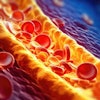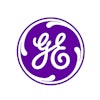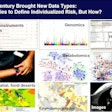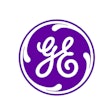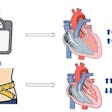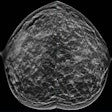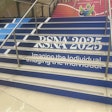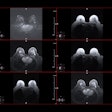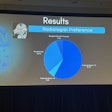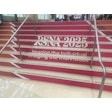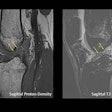AuntMinnie.com continues its live coverage of RSNA 2011 news. Brian Casey, editor in chief,
highlights day one in his
editor's note from our RSNA 2011 news daily coverage.
If you are not one of the 137,000 members of AuntMinnie.com, be sure to sign up for your free membership.
Day five of RSNA 2011 news includes:
Lossy image compression affects CAD performance
CHICAGO - Although it doesn't influence 3D volume rendering, lossy image compression can negatively affect computer-aided detection (CAD) performance, according to research presented at the RSNA 2011 meeting.
In a study evaluating the impact of several irreversible compression ratios on 3D-volume rendered images and CAD algorithms, a research team from the University of Mainz in Germany found no significant difference in perceptible image quality for 3D images. Increasing compression ratios did lead to deterioration in CAD results, however.
Read the complete "Lossy image compression affects CAD performance" article
An RSNA 'Christmas Carol'
CHICAGO - For years, the PACSman Awards were an annual tradition in AuntMinnie.com's coverage of the RSNA conference. With the PACSman hanging up his typewriter last year, the baton has now passed to the Dalai Lama of PACS, radiologist and blogger Dr. Sam Friedman, who shares his unique RSNA experience.
The PACSman was gone, and radiology wasn't looking too good either, no doubt about it. The somber, funereal atmosphere in McCormick Place at the RSNA conference was pervasive, even palpable.
Radiologists wandered the halls, heads bowed, hoping to learn something that might make them a better hospitalist, or pathologist, or whatever the Affordable Care Act might actually support. ...
Read the complete "An RSNA 'Christmas Carol' " article
Implementing meaningful use isn't a cakewalk yet
CHICAGO - From a radiology perspective, meaningful use guidelines are challenging, with a minefield of unknowns and pitfalls. It's perhaps unsurprising, then, that a panel discussion on how radiology practices are actually handling meaningful use attracted quite a crowd on Tuesday at RSNA 2011.
What do radiologists really know? It's fair to say that most radiologists who treat Medicare or Medicaid patients on an outpatient basis know that by 2015, compliance with stage 1 requirements of the U.S. Department of Health and Human Services' (HHS) initiative to promote electronic medical records will be necessary to avoid financial penalties. They also know that there's a financial incentive: up to $44,000 per physician for those who achieve all goals.
Read the complete "Implementing meaningful use isn't a cakewalk yet" article
PET/MRI surpasses PET/CT for some abdominal lesions
CHICAGO - PET/MRI can outperform PET/CT for lesion conspicuity and characterization in the abdomen, particularly in the liver, according to a study presented by Swiss researchers on Wednesday at the RSNA 2011 meeting.
A total of 19 oncology patients with a mean age of 55 years were enrolled in the study, said lead study author Dr. David Crook, from University Hospital Zurich. Inclusion criteria were a clinically indicated FDG-PET/CT examination for staging and restaging of cancer, a lack of contraindications for PET/MRI, and the presence of a PET-positive lesion in the abdomen.
Read the complete "PET/MRI surpasses PET/CT for some abdominal lesions" article
Day four of RSNA 2011 news includes:
iPads are OK for VC reviews, but take longer
CHICAGO - Apple's iPad 2 can be used safely and effectively for 2D reviews of virtual colonoscopy images, but using the device for this purpose takes longer and may require extra training, Italian radiologists have found.
"The iPad 2 may also find a role for image sharing and for teaching. The limitations of 2D reading should be overcome by the introduction of software tools," noted Dr. Emanuele Neri, president of EuroPACS and chair of the Radiology Informatics Committee of the Italian Society of Radiology, in a scientific e-poster presented at the RSNA 2011 meeting.
Read the complete "iPads are OK for VC reviews, but take longer" article
MRI finds brain changes from violent video games
CHICAGO - Just one week of playing a violent video game produced measurable differences in blood flow to select areas of the brain on functional MRI (fMRI), which may explain why game playing has been linked to behavioral changes in some people.
"We found that gamers showed reduced activity in areas of the brain involved in attention, inhibition, and decision-making," said Dr. Vincent Mathews, professor of radiology at Indiana University, in a press briefing at this week's RSNA 2011 conference.
Read the complete "MRI finds brain changes from violent video games" article
Easy 1-day VC prep delivers high sensitivity
CHICAGO - Virtual colonoscopy using a same-day bowel preparation showed high diagnostic accuracy and equally high patient satisfaction in a study from Italy presented on Wednesday at the RSNA 2011 meeting.
The same-day noncathartic bowel prep using iodinated oral contrast had overall excellent image quality and high sensitivity compared to conventional colonoscopy, according to the researchers.
Read the complete "Easy 1-day VC prep delivers high sensitivity" article
Baseline mammogram callback rates too high, study finds
CHICAGO - Recall rates for baseline screening mammograms are too high and could affect women's future compliance with screening, according to research presented Wednesday morning at the RSNA 2011 meeting.
David Gur, ScD, from the University of Pittsburgh, presented work he conducted with colleagues to evaluate radiologists' performance in reading baseline screening mammograms for women ages 50 or younger. The study included eight Mammography Quality Standards Act (MQSA)-qualified radiologists, each of whom reviewed at least 100 baseline mammograms. Computer-aided detection (CAD) for mammography was used in all cases.
Read the complete "Baseline mammogram callback rates too high, study finds" article
ACR's CT dose registry goes for quality, quantity
CHICAGO - The American College of Radiology's (ACR) Dose Index Registry (DIR) pilot project, launched in May, has already amassed a critical number of studies, while developing ways to keep the data accurate despite wide variations in practice patterns and study nomenclature, according to a Wednesday presentation at the RSNA 2011 informatics sessions.
By accurately tracking medical imaging doses for CT studies, DIR has the ability to establish national benchmarks, enabling individual practices to monitor dose indices and compare practice patterns. Perhaps best of all, it's ready to use now, and any imaging facility can register and help further the ACR's efforts, said Richard Morin, PhD, an ACR fellow from the Mayo Clinic in Jacksonville, FL.
Read the complete "ACR's CT dose registry goes for quality, quantity" article
Frequent soccer 'heading' may cause brain injury
CHICAGO - Too much "heading" a soccer ball could result in brain abnormalities similar to those found in traumatic brain injury patients, researchers from New York found in a study using diffusion-tensor MRI.
Players who head the ball with high frequency appear to suffer white-matter damage that resembles what is found in brain trauma injuries, said Dr. Michael Lipton, PhD, associate director of the Gruss Magnetic Resonance Research Center at Albert Einstein College of Medicine.
Read the complete "Frequent soccer 'heading' may cause brain injury" article
MRI shows fish-filled diet helps lower Alzheimer's risk
CHICAGO - MR images suggest that eating baked or broiled fish on a weekly basis can reduce the risk of developing mild cognitive impairment and Alzheimer's disease, according to research presented on Wednesday at the RSNA 2011 show.
Lead study author Dr. Cyrus Raji, PhD, from the University of Pittsburgh Medical Center, said this is the first study to establish a direct relationship between fish consumption, brain structure, and the risk of Alzheimer's disease.
Read the complete "MRI shows fish-filled diet helps lower Alzheimer's risk" article
DBT helps detect, characterize dense tissue masses
CHICAGO - Digital breast tomosynthesis (DBT) shows promise in detecting and characterizing masses, particularly in women with dense breast tissue, researchers said in a Tuesday session at the RSNA 2011 meeting.
However, the technology does have some areas for growth, including the need for more clinical data on its recall specificity, appropriate dose, and use protocols, as well as the fact that increased clinical application will require training. And DBT reading times can be up to two times longer than those for digital mammography, according to some research.
Dr. Mark Helvie of the University of Michigan Health System gave a digital breast tomosynthesis overview to session attendees to set the stage for a series of studies that address both DBT's strengths and weaknesses.
Read the complete "DBT helps detect, characterize dense tissue masses" article
Data-mining tool identifies overexposed chest x-rays
CHICAGO - Taking a high-quality portable chest x-ray can be difficult, leading to an overexposed image when digital radiography equipment is used. One solution to reduce overexposures is a new data-mining tool, according to a Tuesday presentation at the RSNA 2011 meeting.
Bedside chest radiography, whether using analog or digital equipment, presents challenges. Variations in tube-to-detector distance, grid alignment, patient motion, and the size of a patient can all affect image quality. With computed radiography (CR) or digital (DR) radiography equipment, the temptation to overexpose an image exists because the dynamic range of digital detectors and image processing capability can compensate for a poor image.
Read the complete "Data-mining tool identifies overexposed chest x-rays" article
Day three of RSNA 2011 news includes:
Study backs mammography screening in women under 50
CHICAGO - In a study of women ages 40 to 49 screened with mammography, the risk of finding invasive breast cancer was similar regardless of whether a woman had a family history of the disease, indicating that this age group would benefit from annual screening.
"Family history does not seem to impact the rate of invasive disease in this cohort," said Dr. Stamatia Destounis, radiologist and managing partner of Elizabeth Wende Breast Care, at a press briefing at the RSNA 2011 meeting. "We were intrigued and surprised by the data," she said, noting that common wisdom suggests that women with a family history would be at greater risk that women without a family history of breast cancer.
Read the complete "Study backs mammography screening in women under 50" article
FDG-PET is cost-effective 1st imaging option for dementia
CHICAGO - FDG-PET is more cost-effective in an initial workup of dementia patients, while amyloid PET imaging is more cost-effective as the secondary imaging option in a tertiary care setting, according to a study presented on Monday at the RSNA 2011 conference.
In a comparison of cost per patient for both imaging techniques, as well as their diagnostic accuracy, researchers from the University of Washington in Seattle also found that the average cost per patient increases significantly if either FDG-PET or amyloid PET is used outside of a dementia center with lower pretest probability.
Read the complete "FDG-PET is cost-effective 1st imaging option for dementia" article
iPad up for task of assessing pulmonary nodules
CHICAGO - Apple's iPad appears feasible for use by radiologists in assessing pulmonary nodules, according to a study from Italy presented on Tuesday at the RSNA 2011 meeting.
In the study involving 274 pulmonary nodules, the research team found that radiologists employing an iPad 2 could detect and localize all nodules on chest CT scans that were detected using an Apple iMac desktop computer. Reading times were also comparable.
Read the complete "iPad up for task of assessing pulmonary nodules" article
Siemens beefs up CT line, launches ultrasound system
CHICAGO - A pair of new CT scanners is pacing the RSNA 2011 product introductions from Siemens Healthcare. The company is also promoting Biograph PET/CT and its new Acuson S1000 ultrasound system, and is demonstrating new product launches in healthcare informatics, digital radiography, and interventional radiology.
Read the complete "Siemens beefs up CT line, launches ultrasound system" article
PET/CT prevents dissections for head and neck cancer patients
CHICAGO - Using F-18 FDG-PET/CT scans to evaluate the response of patients who received chemoradiotherapy for head and neck cancer can prevent unnecessary dissections for some, researchers from the U.K. and the U.S. said at an RSNA 2011 scientific session.
Although each of the session presenters cautioned that more analysis is needed, wider use of this examination might prevent neck dissections that would ultimately prove to be unnecessary once pathological evaluations are completed.
Read the complete "PET/CT prevents dissections for head and neck cancer patients" article
MRI rules supreme in postoperative knee, but challenges remain
CHICAGO - Advances in procedures such as knee replacement, ligamentous reconstruction, and articular cartilage and meniscus repair have led to rapid growth in open and arthroscopic knee surgery. This has heightened demand for postoperative MRI, yet the topic is barely covered in the literature, according to Swiss researchers.
The anterior cruciate ligament (ACL) is one of the most frequently injured ligaments of the knee. During the first month after surgery, MR signal intensity of ACL grafts is usually low on T1- and T2-weighted MRI, and thus is similar to normal patellar tendon, reflecting the relatively avascular nature of the grafts, noted lead author Dr. Ralph Gnannt, from the department of radiology at Zurich University Hospital, in a comprehensive education exhibit presented at the RSNA 2011 congress.
Read the complete "MRI rules supreme in postoperative knee, but challenges remain" article
Mammography, CT, PET/MRI pace Philips RSNA product debuts
CHICAGO - Philips Healthcare is highlighting its renewed push in mammography in its RSNA booth, as well as new product introductions in CT and the ongoing development of its PET/MRI program, which got a boost with a key regulatory clearance before the show. The company has also introduced new products in digital x-ray and ultrasound, as well as a new branding for its iSite PACS software line.
Read the complete "Mammography, CT, PET/MRI pace Philips RSNA product debuts" article
Non-DICOM-compliant CDs are increasingly common
CHICAGO - The Mayo Clinic in Rochester, MN, has experienced a disconcerting increase over the past four years in the number of outside image CDs that fail to conform to the DICOM standard, according to a study presented on Monday at the RSNA 2011 meeting.
In a four-year review of outside patient image CDs imported by the Mayo Clinic, a research team found a statistically significant drop in hard-copy films being imported and a significant increase in DICOM-compliant CDs. However, the number of non-DICOM-compliant CDs almost doubled.
Read the complete "Non-DICOM-compliant CDs are increasingly common" article
Study shows advanced imaging growth coming to an end
CHICAGO - The rapid rise in the early 2000s of utilization of advanced imaging modalities such as CT, MRI, and nuclear medicine has come to an end, according to researchers at Thomas Jefferson University in Philadelphia.
In this RSNA 2011 poster session, Dr. Richard Sharpe presented findings from a study he and colleagues conducted to determine whether the previously seen dramatic growth patterns of these advanced imaging modalities have changed in recent years. He found that from 2007 through 2009, there was significant curtailment of growth in CT and MRI, and, in fact, the rate of nuclear medicine utilization actually decreased.
Read the complete "Study shows advanced imaging growth coming to an end" article
Pay attention! A different brain pathway for kids with ADHD
CHICAGO - Researchers employing functional MRI have found that children with attention deficit/hyperactivity disorder (ADHD) may show different brain activity patterns when processing visual attention information.
At a press briefing at the RSNA 2011 meeting, Xiaobo Li, PhD, assistant professor of radiology at the Albert Einstein College of Medicine, said the study among 18 children with ADHD and 18 controls indicated that "the pattern of brain activity for processing visual attention information looks a little different in children with ADHD."
Read the complete "Pay attention! A different brain pathway for kids with ADHD" article
Day two of RSNA 2011 news includes:
AMA president: Radiologists face income 'triple jeopardy'
CHICAGO - The failure of the congressional "supercommittee" puts radiologists, in particular, in triple jeopardy for income cuts, warned the president of the American Medical Association (AMA) in a plenary speech at this week's RSNA 2011 meeting.
Dr. Peter Carmel, president of the AMA and chief of neurosurgery at New Jersey Medical School, said that failure of congressional committee to find a way to carefully cut government spending means that Medicare will suffer an automatic 2% reduction due to the "sequestration" formula.
Read the complete "AMA president: Radiologists face income 'triple jeopardy'" article
New angio system leads GE's RSNA product debuts
CHICAGO - At the top of the agenda in the RSNA 2011 booth of GE Healthcare is a new laser-guided, robotic-controlled interventional angiography system that was unveiled with fanfare at this week's meeting. Also featured are patient-controlled environments for mammography and MRI, a new mobile x-ray system, and a new entry in the vendor's PET/CT product line.
Read the complete "New angio system leads GE's RSNA product debuts" article
Nuclear medicine shows promise for dense breast tissue
CHICAGO - Nuclear medicine modalities show promise for breast cancer screening and diagnosis in women with dense breast tissue, although the various forms are still evolving, RSNA 2011 attendees learned at a Monday morning course.
Nuclear breast imaging refers to everything from positron emission mammography (PEM) to breast-specific gamma imaging (BSGI) to molecular breast imaging (MBI), according to Dr. Wendie Berg, PhD, of the University of Pittsburgh. Berg gave an overview of the modality during the session.
Read the complete "Nuclear medicine shows promise for dense breast tissue" article
CT and violin makers create beautiful music together
CHICAGO - At a press briefing at the RSNA 2011 show, researchers and violin makers showed how they used CT to examine a Stradivarius violin noninvasively and then recreate it using computer-controlled machinery.
Dr. Steve Sirr, a consultant radiologist at Abbott Northwestern Hospital in Minneapolis, and a pair of modern luthiers used CT to virtually dissect the renowned "Betts" Stradivarius violin, which was constructed in 1704.
Read the complete "CT and violin makers create beautiful music together" article
Dormez-vous? Hypnosis can overcome MRI claustrophobia
CHICAGO - More radiologists may soon be keen to learn about the art and science of hypnosis, following its successful use in France in patients who suffered from claustrophobia prior to undergoing MRI.
A group from L'Hôpital Privé de Thiais, Val de Marne, in the Paris suburbs, have used hypnosis daily in the radiology department since 2004. MRI technicians Marc-Andre Fontaine and Nachwan Alexandre, along with radiologist Dr. Bruno Suarez, learned Ericksonian hypnosis methods over 15 months. They are presenting their work in a scientific poster at the RSNA 2011 meeting.
Read the complete "Dormez-vous? Hypnosis can overcome MRI claustrophobia" article
Imaging evolves to lead atherosclerosis care
CHICAGO - The management of atherosclerosis, the No. 1 cause of death in the U.S., has been reinvented by advances in imaging technology, according to a panel presentation on Sunday at the RSNA 2011 meeting.
Led by Dr. Geoffrey Rubin, radiology chair at Duke University Medical Center, and Dr. Zahi Fayad, PhD, professor of radiology and cardiology at Mount Sinai Medical Center, the opening-day panel explored the evolution of CT angiography (CTA) as the leading imaging modality for atherosclerotic disease, as well as the growing contributions of other modalities in the refinement of atherosclerosis care.
Read the complete "Imaging evolves to lead atherosclerosis care" article
CT use varies widely across U.S., study shows
CHICAGO - Medicare CT use varies widely depending on geography -- so widely that beneficiaries in the highest utilization state receive 70% more CT scans than those in the lowest state, according to researchers from Philadelphia.
Variations like this imply that imaging is not being used appropriately, the group concluded.
At the RSNA 2011 meeting, Dr. Richard Sharpe from Thomas Jefferson University presented findings from a study that examined geographic variation in CT utilization, a topic that has become increasingly interesting to policymakers concerned about over- or underutilization.
Read the complete "CT use varies widely across U.S., study shows" article
Toshiba RSNA highlights include CT, MRI, ultrasound
CHICAGO - A new CT scanner, a pair of new ultrasound systems, a wireless digital x-ray unit, and enhancements in coil technology for its MRI line are among the new product launches for Toshiba America Medical Systems at the RSNA 2011 meeting in Chicago.
Read the complete "Toshiba RSNA highlights include CT, MRI, ultrasound" article
Day one of RSNA 2011 news includes:
BI-RADS 3 lesions common on screening US, but rarely malignant
CHICAGO - BI-RADS 3, or "probably benign," lesions are seen in a whopping 20% of patients after three rounds of screening ultrasound, but they are rarely malignant, according to researchers from Southwoods Imaging Center in Youngstown, OH.
However, because a BI-RADS 3 finding can worry patients, clinicians are seeking a way to better categorize these lesions.
In this Sunday morning RSNA 2011 session devoted to breast ultrasound, Dr. Richard Barr, PhD, presented results from a study he and colleagues conducted using data from the American College of Radiology Imaging Network (ACRIN) 6666 trial to ascertain the frequency and malignancy rate of BI-RADS 3 ultrasound lesions.
Read the complete "BI-RADS 3 lesions common on screening US, but rarely malignant" article
Dual-energy CT can identify dangerous thrombi
CHICAGO - The use of dual-energy CT with spectral imaging can differentiate bland thrombi in the portal vein from more dangerous tumor thrombi in patients with hepatocellular carcinoma, researchers reported at the RSNA 2011 meeting on Sunday.
Dr. Lijun Qian, PhD, from the department of radiology at Jiao Tong University School of Medicine in Shanghai, said that by comparing the thrombus iodine density, thrombus-aorta iodine density ratio, and thrombus-portal vein iodine density ratio, the thrombus identified in the vein could be classified as neoplastic or a benign clot formation.
Read the complete "Dual-energy CT can identify dangerous thrombi" article
FDG-PET/CT assesses early chemo response in breast cancer
CHICAGO - FDG-PET/CT's ability to evaluate pathological response after two cycles of neoadjuvant chemotherapy could help breast cancer patients avoid ineffective treatment, according to a study presented on Sunday at the RSNA 2011 meeting.
Neoadjuvant chemotherapy can shrink a tumor mass in breast cancer patients, potentially reducing the need for surgery, noted lead author Dr. Carolin Riegger, from the University of Dusseldorf 's department of diagnostic and interventional radiology, who presented the study results. However, approximately 25% of patients do not respond to such therapy. Early differentiation between people who respond to treatment and those who don't can help avoid ineffective treatment and reduce unnecessary side effects.
Read the complete "FDG-PET/CT assesses early chemo response in breast cancer" article
Structured report templates gaining visibility at RSNA
CHICAGO - What's new about structured report templates at the RSNA 2011 meeting, which begins its whirlwind week today in the Windy City? There's plenty to learn about this concept as it continues to move toward radiology practice-changing adoption.
Individualized reports historically have been considered sacrosanct as the medical specialty of radiology pioneered "going digital" in medicine and adopting electronic technologies to replace paper and x-ray film. But the pedestal upon which individual reports have been placed is being undermined by the need for greater consistency, increased efficiency, and improved communication with clinicians and other medical professionals.
Read the complete "Structured report templates gaining visibility at RSNA" article
The future of radiology is bright, RSNA president says
CHICAGO - Radiology is beset with challenges ranging from regulatory to monetary. However, in his presidential address at the RSNA 2011 meeting, Dr. Burton Drayer said he preferred to focus on the "rainbows instead of the impending storm clouds."
Sometimes pessimism gets the best of us, said Drayer, who is also radiology chairman at Mount Sinai School of Medicine in New York City. It's easy to think that radiology is threatened, which it is, but he likened radiology to the Pebble Beach golf course in California.
"To me, this scene of the short par three seventh hole represents a cup half full," he said. "Majestic beauty and excitement. Yet, still fraught with potential dangers from the ocean, from sand traps, and uncontrollable forces like the wind," he said.
Read the complete "The future of radiology is bright, RSNA president says" article
